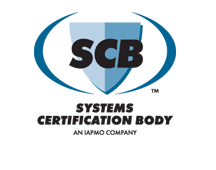For Versatility and Integration, Water is the Natural Choice
Hydronic systems offer the “whole building approach”:
• Achieve any efficiency goal
• Installs in any facility, anywhere
• Tie all mechanical components of the building together
• Salvage energy and reuse it elsewhere in the building
• All “green” technology interfaces easily
From Fairbanks to Miami, and from Net Zero to LEED Platinum, hydronic systems have proven their worth in projects large and small. A facility’s location, size, intended use, hours of operation and efficiency goals don’t matter. There’s a hydronic system for every building, every goal and every budget.
Simply put, there is no HVAC system available today that’s more versatile than a well-designed hydronic system. Nor is there one that allows for more complete integration with other building operations. Heating, cooling, ventilation, domestic hot water, fire suppression, snow melting and even irrigation; everything can be efficiently tied into a central hydronic system. Additionally, as new technology is developed, it can easily be adapted into existing hydronic systems.
Ground up or renovation
One fantastic trait of a hydronic system is the ability to fit super-efficient technology into any building, whether it’s been standing for 150 years or if it’s still just a twinkle in your architect’s eye.
Even if an existing building wasn’t served by a hydronic system before, there are countless ways to retrofit for premium comfort and energy savings. Existing ductwork can be outfitted with hydronic coils. If there’s no ductwork, it’s far less intrusive to run flexible pipe than it is to install sheet metal. Thin, lightweight slabs can be poured over sub-flooring for radiant luxury, and a plethora of panel radiators are available to discretely or fashionably condition a space.
If mechanical space is limited, hydronic systems provide the best solution. Moving energy throughout a building with water can be far safer and more efficient than with a VRF (variable refrigerant flow) based air system. This means that you can put a mechanical room just about anywhere, regardless of how big the facility is.
Tie it together
Hydronic systems are unique in their ability to efficiently tie numerous building operations together. Air-based VRF systems and their distribution units can’t come remotely close to matching this flexibility.
Domestic hot water production - which can account for a huge part of a building’s energy spend – is easily incorporated into a hydronic system. Not only can the system’s boiler be used to provide ample hot water, but any other equipment that is in cooling mode yields salvageable heat, to be used elsewhere in the building. This includes server rooms and walk-in-boxes. Hydronic systems even allow for energy storage, which is used to minimize peak load penalties.
Many building owners know that providing ventilation air accounts for a massive portion of their utility bills, especially in the dead of winter and the dog days of summer. In both heating and cooling mode, a hydronic system can serve a building’s DOAS (dedicated outdoor air system). A “run around loop” also know as an energy recovery heat exchanger, can be placed inside ventilation ductwork to save energy in both heating and cooling modes if no DOAS is present.
Say goodbye to winter sidewalk maintenance with a silent, invisible snowmelt system. Put a little tubing in the concrete when it’s poured, add warm water, and icy sidewalks are but a memory.
Very often, tying a building’s many systems together with a hydronic system means that “one call solves it all.” A single mechanical contractor can be used for installation and maintenance.
Show me the green
Nothing demonstrates the versatility of a hydronic system like the ability to integrate green technology. From mild to wild, there’s very little that an innovative designer can’t create. For example, the new Community Cancer Care facility in Missoula, MT, circulates water from the remnants of a glacier to provide nearly-free cooling for the building.
Geothermal is a perfect match for hydronic systems large and small. Solar, whether photovoltaic or thermal, can be used generate power, heat the building, melt snow or provide domestic hot water pre-heat to kitchens, classrooms and lavatories.
Installation of combined heat and power units, aka CHP, has risen considerably in the past few years. Here, a large, natural-gas fired reciprocating engine turns a generator that powers the building and feeds the grid. The byproduct is heat.
What you do with all that “free” heat is entirely up to you and your hydronic system designer. You could heat the building, make domestic hot water, melt snow in your parking lot, or, in the summer, use an absorption chiller to cool the building. Ronald McDonald House NYC did all of the above in 2015.
Nobody knows what the next great technological breakthrough might be, but we do know that all those identified and emerging as affordable are adaptable to a central hydronic system. Choose a hydronic system as the best option for your building now and in the future.
For versatility, water always wins. Think hydronic.
For more information, please contact the Radiant Professionals Alliance and the Hydronics Industry Alliance at (877) 427-6601 or info@HIA-C.org
Water-based HVAC Systems Are Naturally:
Hydronic systems use fluid or steam as the medium for the final heat-transfer

































